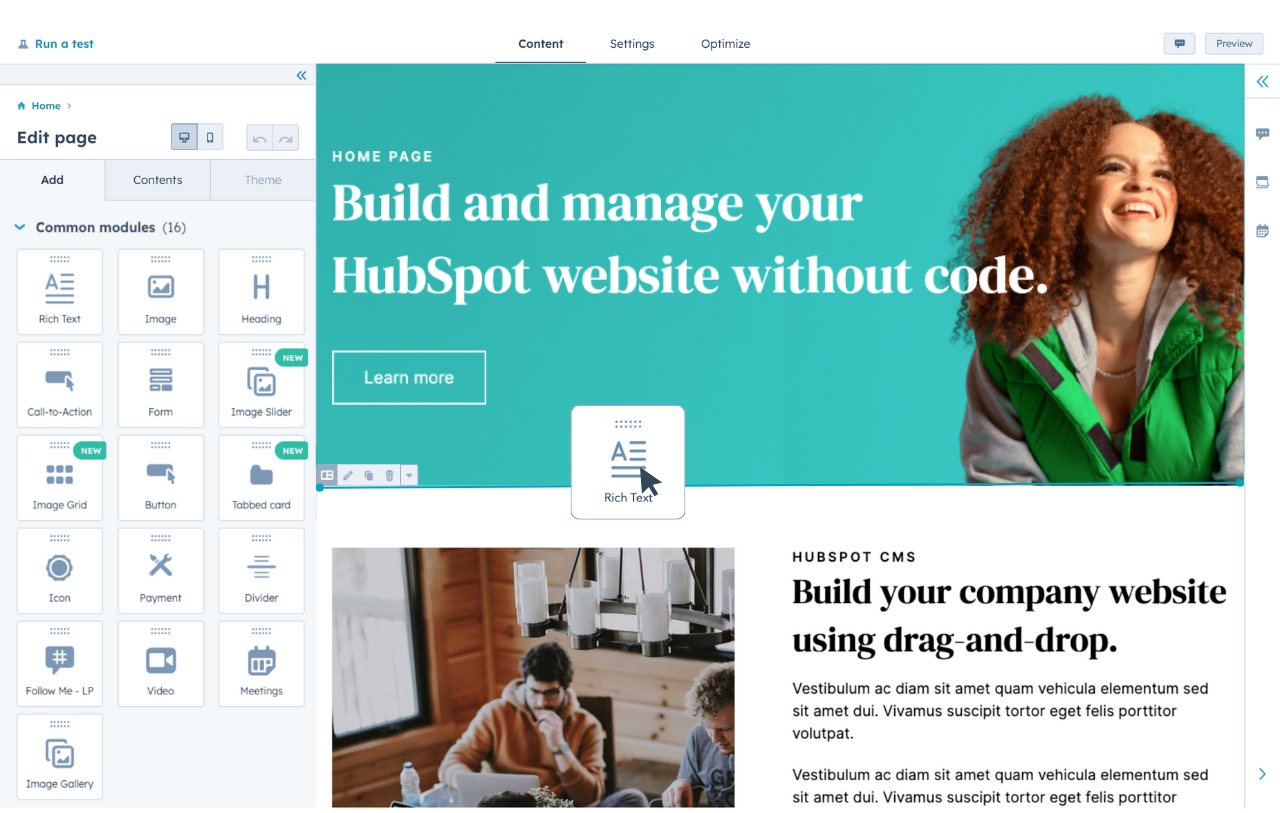
Is HubSpot the right choice for your business?
Choosing the right digital growth platform can shape your business's future.
HubSpot can give you powerful tools to attract leads, engage customers, and measure results - all in one place.
But is it the best solution for your team, goals, and growth plans?
Let's take a closer, unbiased look at what HubSpot offers and whether it aligns with your business needs to help you make an informed decision.
In this guide
Our guide will help you confidently determine whether HubSpot is the right fit for your business.
HubSpot is a sales and marketing platform that offers integrated tools for marketing, sales, customer service, and operations. Its ecosystem includes:
- Marketing Hub – Email marketing, automation, SEO, ads, and lead nurturing.
- Sales Hub – Deal pipelines, automation, email tracking, and reporting.
- Service Hub – Help desk, ticketing, live chat, and knowledge base.
- Content Hub – Website hosting, content management, and personalisation.
- Operations Hub – Data sync, integrations, and workflow automation.
HubSpot’s primary advantage lies in its all-in-one approach, allowing teams to work from a single platform without needing multiple disconnected tools.
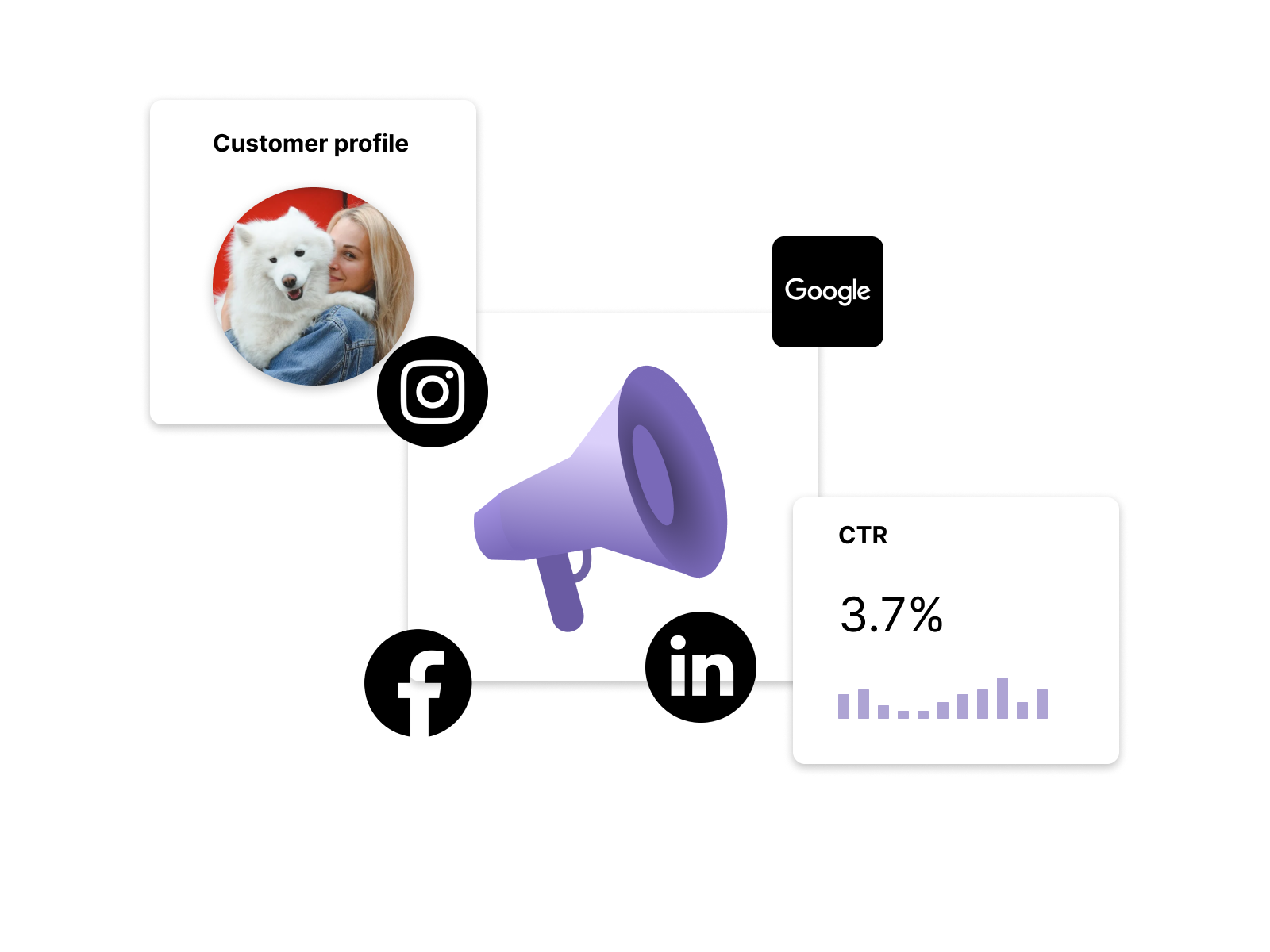
Marketing Hub
To dive a little deeper into the Marketing Hub: this powerful tool helps businesses streamline their marketing efforts by bringing all your campaigns, automation, and reporting into one central place.
With features for managing emails, social posts, and lead nurturing, you can save time and maintain consistency across every touchpoint.
See a full feature breakdown on the HubSpot website

Sales Hub
To dive a little deeper into Sales Hub: HubSpot’s Sales Hub is designed to help you manage leads, automate follow-ups, and close deals faster—all from one easy-to-use dashboard.
With features like pipeline management, email tracking, and built-in calling, your sales team can focus on building relationships and moving opportunities forward.
Advanced reporting gives you clear visibility into performance, helping you identify what’s working and where you can improve.
See a full Sales Hub breakdown on the HubSpot website

Service Hub
Let's dive a little deeper into Service Hub: HubSpot’s Service Hub is designed to help your team deliver exceptional customer experiences at every stage.
With a unified inbox, ticketing system, and knowledge base, you can resolve issues quickly and keep customers informed. Built-in automation, surveys, and reporting tools make it easy to track customer satisfaction, spot trends, and continually improve your support processes.
See a full Sales Hub breakdown on the HubSpot website
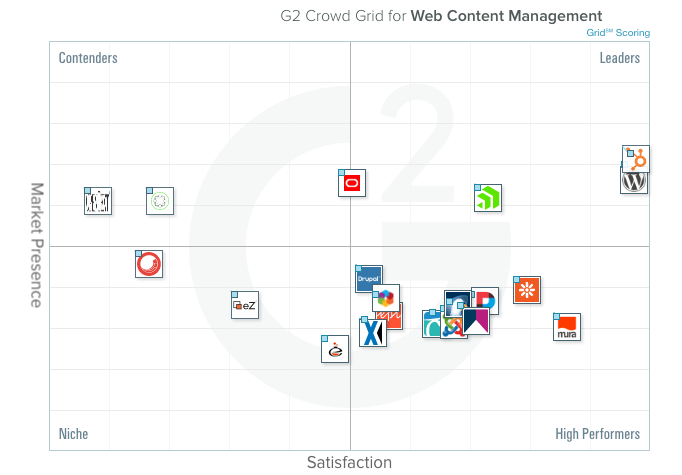
Content Hub
Let's dive a little deeper into Content Hub: HubSpot’s Content Hub is built to help you create, manage, and optimise all your digital content in one place.
From landing pages and blogs to video and SEO tools, Content Hub gives your team everything you need to engage your audience with relevant, timely content.
The intuitive drag-and-drop editor means you don’t need to rely on developers for every change, while built-in analytics show what’s working so you can refine your content strategy as you grow.
HubSpot has also ranked highly in the G2 CMS comparison, edging out Wordpress by an inch
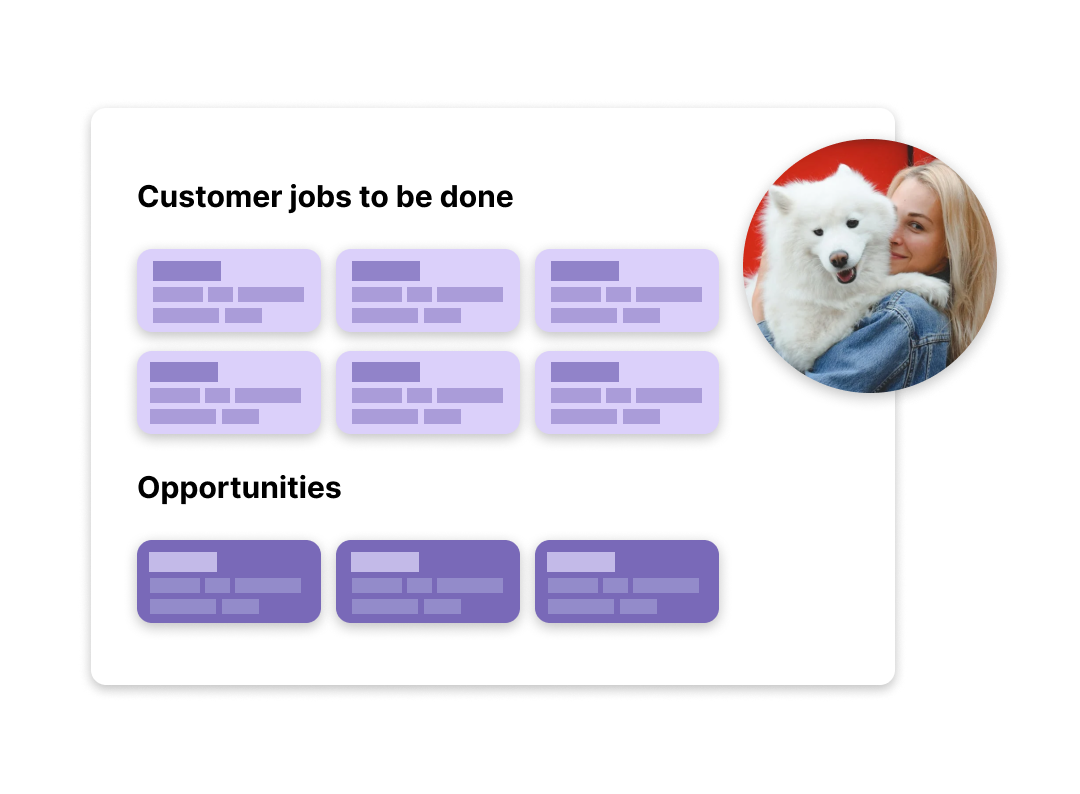
Operations Hub
Let's dive a little deeper into Operations Hub: While Operations Hub offers advanced automation and data tools built for experts, it can deliver meaningful improvements for lots of businesses.
With features like data syncing, workflow automation, and custom integrations, you can streamline key processes and keep your systems running smoothly behind the scenes.
Operations Hub helps ensure your data is always up to date and your teams stay aligned—reducing manual work and minimising errors.
See a full Sales Hub breakdown on the HubSpot website
You don't need to figure it out on your own!
Can't decide if HubSpot is right for you? We get it, an ecosystem like HubSpot has a lot to offer. So it can be hard to decide if it is the right solution for you
While features are important, you may be asking yourself, what are the benefits of having all of these tools in one place? You might even be wondering if it is going to make things more complicated.
There are some primary benefits and some less obvious ones, and we're going to touch on those here for you today covering:
- CMS vs Platform – Unlike Wordpress, Webflow or other Content management systems. Hubspot doesn't just do one thing.
- The full picture – Having all of your customer data in one place is a massive advantage for businesses of all sizes.
- Integration stagnation – When you've got integrations everywhere, progress can be held back.
- Well Supported Ecosystem – including 24/7 help and support, training videos, thousands of partners globally, a vibrant community, themes, modules and guides.
- Simplification – Often, people overcomplicate their tools. HubSpot is easy to use, does the basics really well, and can do complex stuff when needed.
Having all of your customer data in one place can have a major impact on your business. So let's break these benefits down even further.
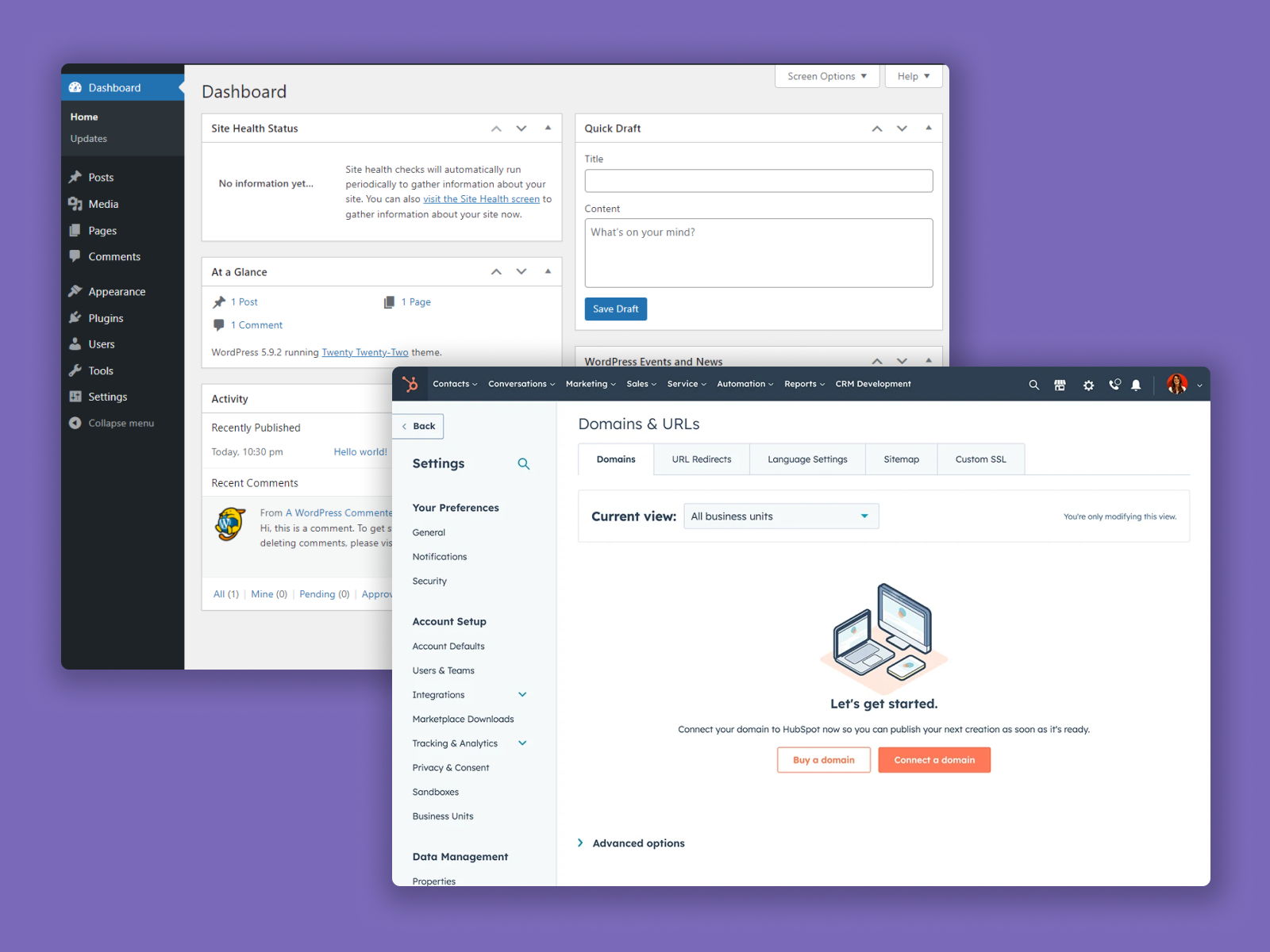
CMS vs Platform
When most businesses set out to build a website, their focus often lands on picking the right CMS. While choosing the right platform is important, it’s just one part of a bigger picture.
One approach to success is thinking beyond the technology and considering the systems, strategies, and processes that drive growth and deliver results.
A solution like HubSpot could deliver a lot more out of the box, and give you as a marketing manager or business owner, more control over your business growth.

The full picture
A key advantage of HubSpot is how it brings all your marketing, sales, website, and operations tools together in one place.
Unlike traditional setups that require separate tools and complex integrations, HubSpot uses a unified system with a shared data foundation. This means you can easily track and report on your entire customer journey, seeing exactly how each part of your business works together—without the hassle.
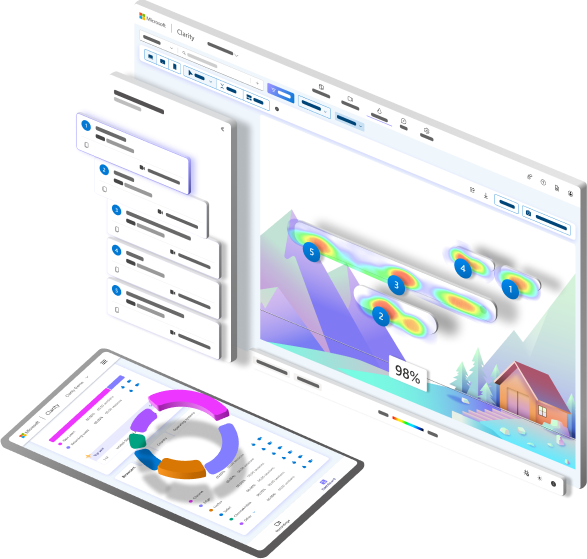
Integration Stagnation
When your tools aren’t fully connected, key information can slip through the cracks. This not only makes decision-making harder but also creates more work for your team costing you valuable time and money.
Gaps in your data can result in missed opportunities, slow response times, and bigger problems that require costly fixes down the road.
HubSpot helps avoid this as your systems are connected out of the box. Ensuring your team has everything they need to succeed, so you can stay focused on growth, not on integrating and troubleshooting. Reporting is challenging enough on its own right!

Well Supported Ecosystem
HubSpot gives you access to a robust suite of tools designed to help your business grow.
Beyond the platform itself, you’ll enjoy dedicated support every step of the way, easy-to-follow guides, and regular updates that introduce new, valuable features.
Tap into a thriving network of trusted partners, explore a wide selection of themes and modules in the marketplace, and connect with a lively user community that’s always ready to share advice and inspiration.
With HubSpot, you have everything you need to succeed and confidently scale your marketing efforts in one connected ecosystem.

Simplification
HubSpot is designed to keep your marketing and sales smart and uncomplicated. If your business requires deeply customised, large-scale systems, you may be better suited to a platform built for that level of complexity.
But for companies looking to drive clear results where every touchpoint counts, HubSpot delivers. It brings together simple, effective sales processes, easy-to-navigate websites, and automation that connects seamlessly with your customers.
The result? A streamlined experience that helps you engage your audience, nurture leads, and grow with confidence. And when it does make sense to take something to the next level, HubSpot usually has an uncomplicated way to achieve it. Sometimes you just need to be prepared to not have the enterprise-grade solution that alternative offerings may provide.
Looking for a HubSpot Web Developer?
Look no further! We've partnered with businesses like Ainger Tomlin, Fundtap, Arkulus, Browsers Books and Sanctuary Mountain to help them implement and integrate HubSpot into their businesses
While HubSpot delivers excellent usability and a powerful all-in-one toolkit, it’s not perfect. Like any platform, it comes with a few watch-outs that can affect performance, cost, and adoption over time:
-
Integrations may not always be seamless, especially with niche or legacy tools.
-
Data migration can get messy if your old CRM isn’t well-structured.
-
Internal adoption takes planning and consistent training.
-
Costs can escalate quickly as you scale or need advanced features.
-
Enterprise or complex businesses may find HubSpot’s workflows and reporting somewhat restrictive.
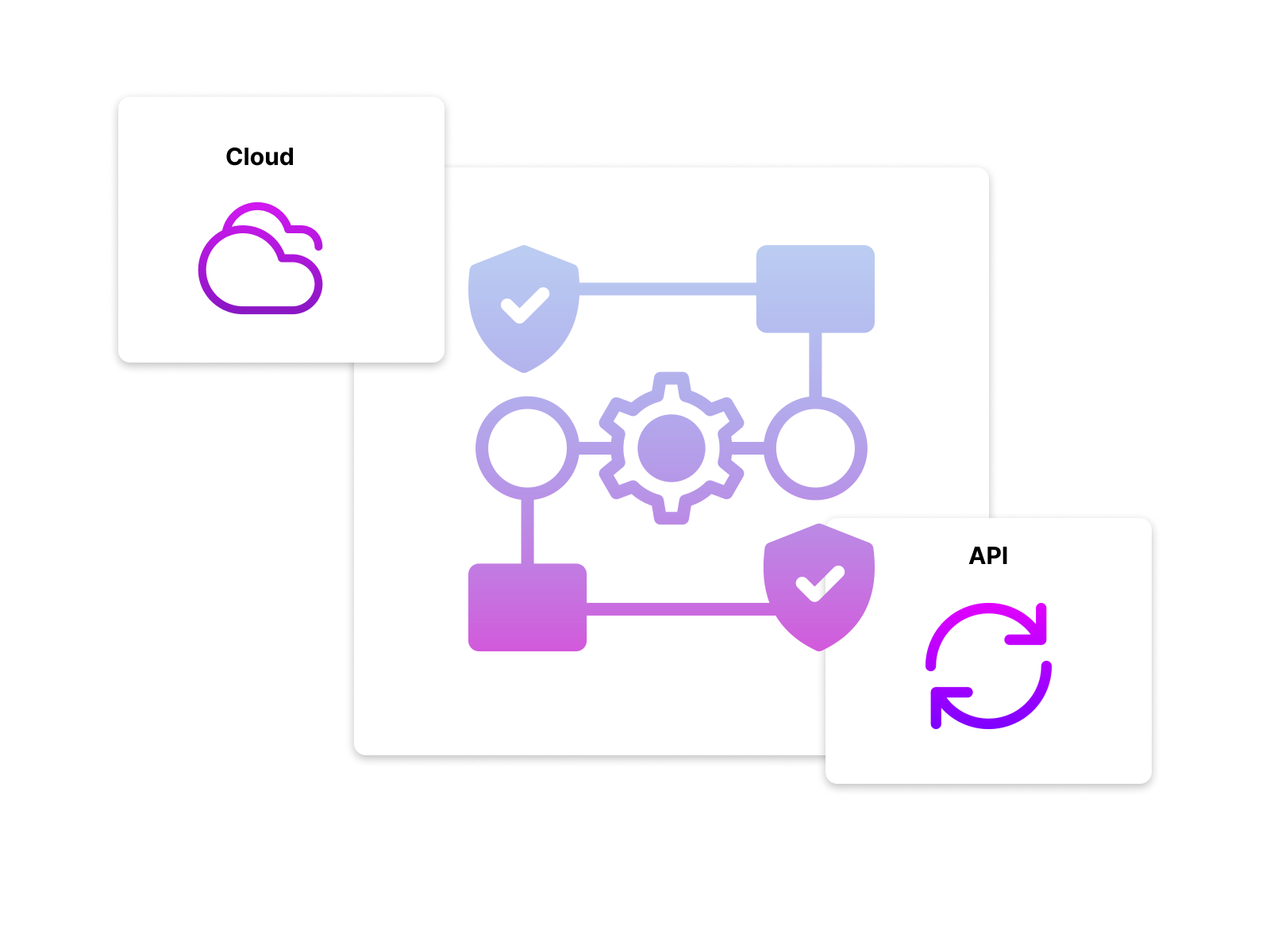
Integration Challenges
HubSpot connects well with many mainstream tools, but integration depth varies:
-
Limited customisation with third-party systems: Native integrations sometimes lack the full functionality of direct API connections. For example, syncing with niche ERP, accounting, or custom databases may require developer involvement or middleware (like Zapier or Make.com).
-
Data silos can still occur: When external tools only sync partial data (e.g. contacts but not deal history), your “single source of truth” vision may not materialise.
-
Ongoing maintenance required: Even well-built integrations can break when APIs or data structures change, especially if you rely on multiple connectors.
Pro Tip: Before migrating, map your entire tech stack — marketing, sales, finance, and service tools — and test how data will flow in both directions.
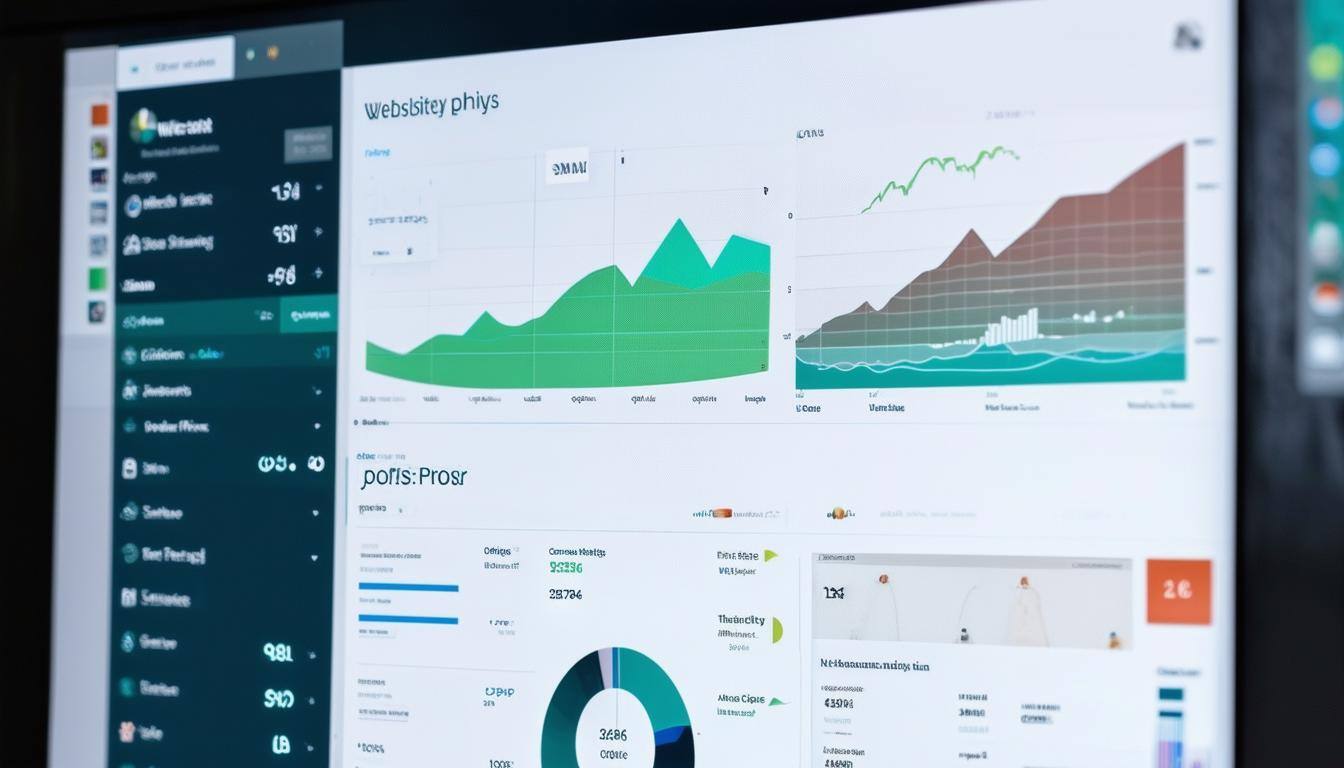
Data Migration Risks
HubSpot has some pretty epic import tools. And while they're quite powerful, they're not entirely foolproof and wonky data will be problematic:
-
Data can be messy: Old CRMs often store inconsistent or duplicate records. Importing that data “as-is” can clutter your HubSpot portal from day one.
-
Complex field mapping: Custom properties from legacy systems need careful alignment. Misaligned fields can cause reporting errors and automation failures.
-
Attachment and activity loss: Some CRMs don’t export engagement histories (like email threads or call notes) cleanly, which can frustrate sales teams who rely on full customer context.
Pro Tip: Run a small “test migration” first. Clean your contact and company data before importing, and use HubSpot’s import preview to spot mismatches early.

Internal Adoption
Change management is one of the most underestimated risks of any new tool adoption. Carefully considering the rollout of HubSpot will be important to your success.
-
Feature overload: Teams new to CRM systems can feel overwhelmed by HubSpot’s extensive toolkit (especially Marketing and Sales Hubs).
-
Inconsistent usage: Without clear processes, users may log incomplete data or skip key steps, weakening your reporting accuracy.
-
Limited internal expertise: Training is essential. HubSpot's training material can definitely help, but most businesses still benefit from guided onboarding or partner support.
Pro Tip: Assign a change “champion” internally. This person ensures consistent processes, reinforces adoption, and bridges the gap between management expectations and everyday users.
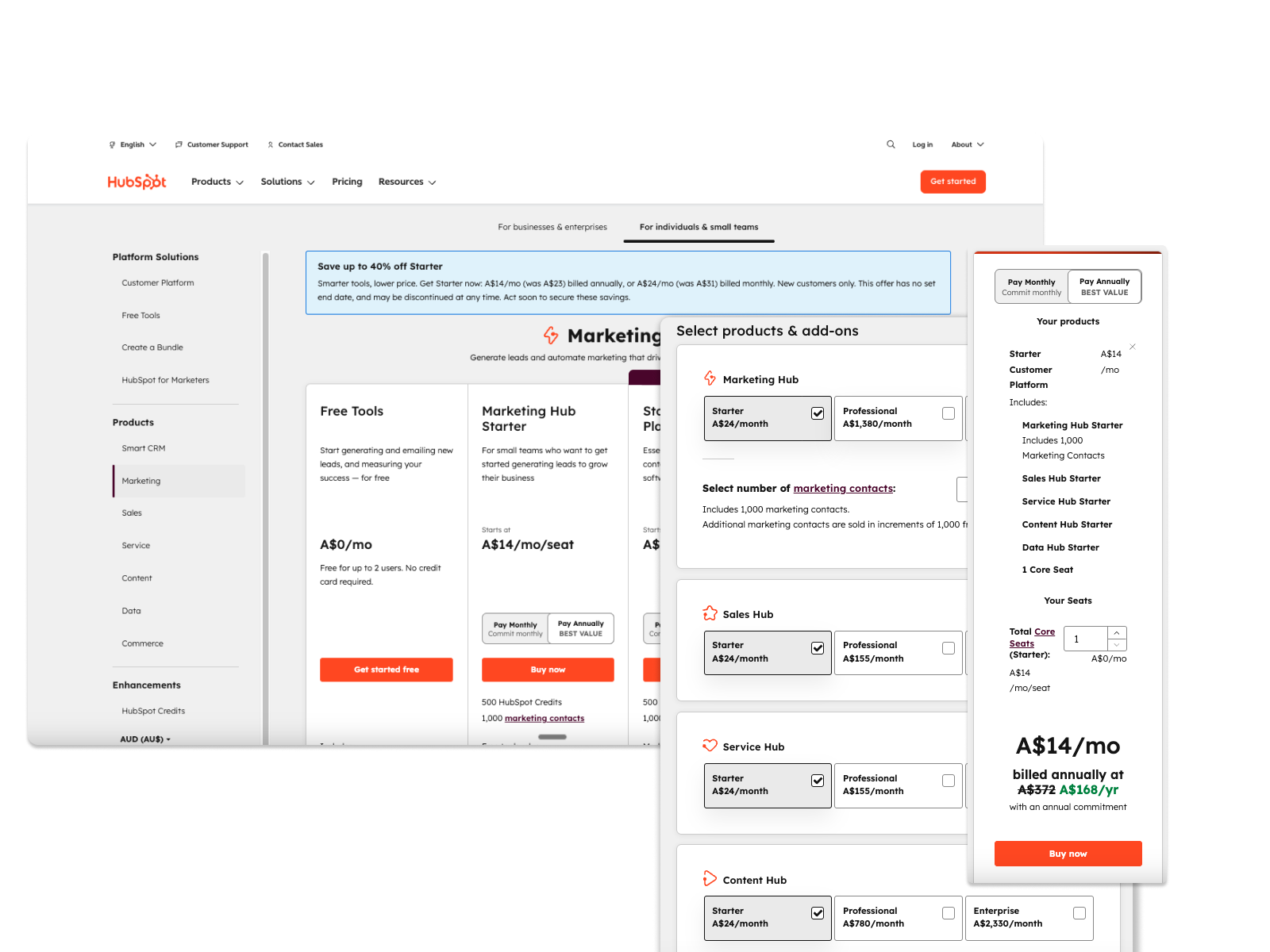
Pricing Escalation Over Time
While the entry cost can be appealing, HubSpot’s true cost scales with your success, so keep in mind, as you grow, your costs will likely increase too :
-
Upgrading to Professional or Enterprise tiers introduces powerful features but also higher fees, especially when adding paid seats or marketing contacts. While there can be workarounds, these always come with tradeoffs.
-
Some essential tools — advanced reporting, A/B testing, custom objects — are locked behind higher plans, creating a “paywall effect” as your team grows.
Pro Tip: Project your growth 12–24 months out. Compare HubSpot’s total cost of ownership (including add-ons and seats) to competitors like Salesforce, Zoho, or Pipedrive.

Limited Flexibility for Overly Complex Workflows
HubSpot excels at standard sales and marketing flows but can feel restrictive for highly customised operations:
-
Rigid automation logic: While powerful, workflows can’t always match the complexity of fully scriptable CRMs.
-
Reporting limitations: Multi-object or cross-funnel reporting often requires Enterprise tier access or third-party BI tools.
Pro Tip: If your team relies on intricate approval flows, tiered sales processes, or custom datasets, ensure those can be modelled in HubSpot prior to adoption.
While HubSpot is a powerful platform trusted by countless businesses, it’s important to recognize that it isn’t the ideal solution for everyone. Your company’s unique goals, workflows, and industry requirements might mean that some of HubSpot’s features aren’t exactly what you need to grow.
So, when might HubSpot not be the best fit, and where should you turn if you find yourself in that position? Let’s take a closer look at the scenarios where another option may suit your business better—and explore some alternative solutions available.
Salesforce - A flexible, enterprise-level CRM designed for complex sales teams and large organisations.
Pipedrive - A simple, intuitive sales-focused CRM perfect for teams who want a streamlined pipeline management tool.
Microsoft Dynamics 365 -Tailored for businesses using Microsoft, Dynamics 365 provides strong CRM and ERP integration for industries with complex operations.
SAP Ecosystem - Enterprise-level CRM and customer experience solutions, fully integrated with SAP ERP and supply chain systems, built for large global companies with complex needs.
Best-of-Breed Tech Stack - Some businesses prefer to combine tools like Pipedrive for CRM, Klaviyo for marketing automation, WordPress for websites, and Zendesk for support. This gives them more flexibility but requires extra setup and ongoing management.
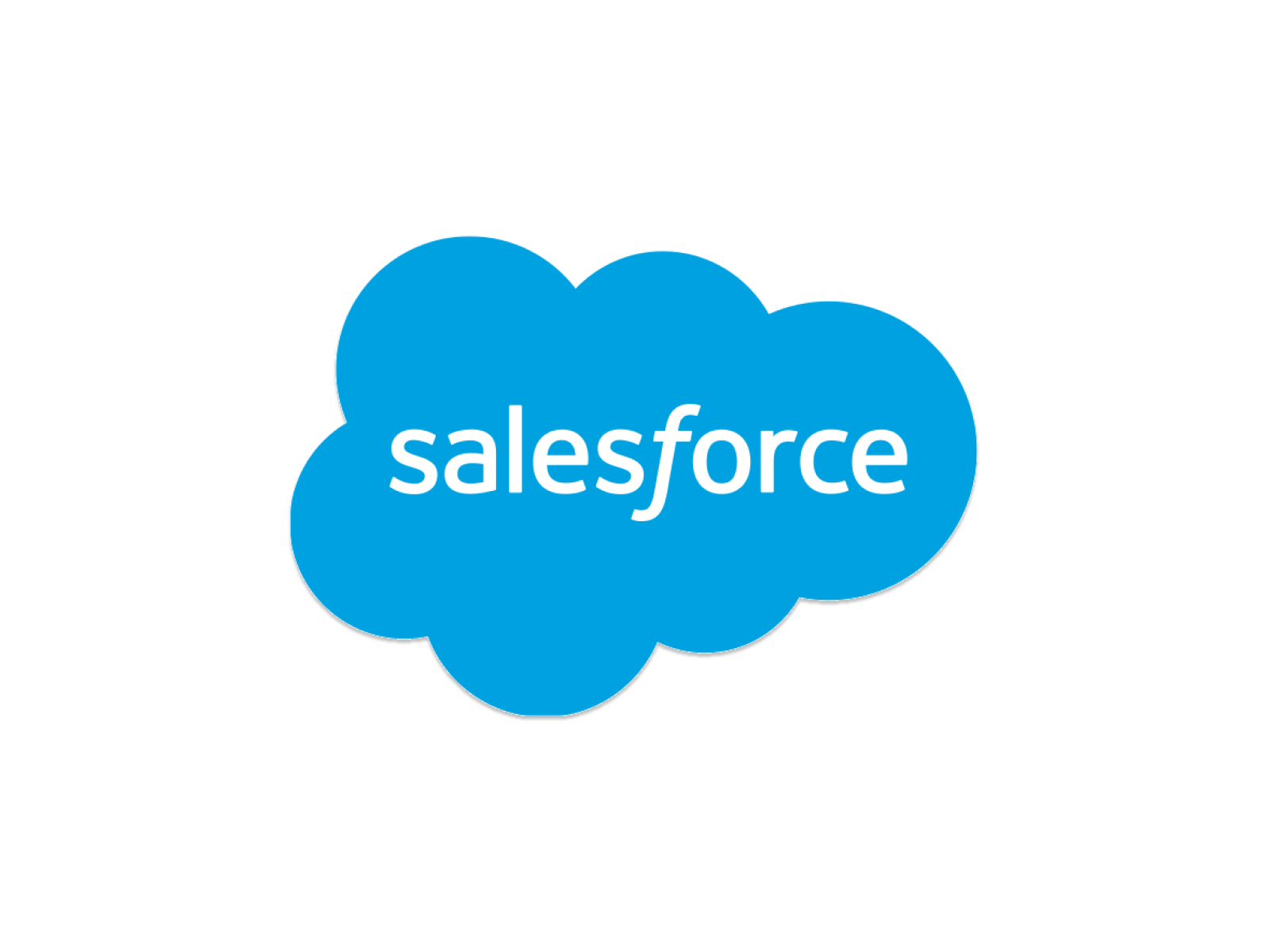
Salesforce
Best Fit For: Large enterprises or organisations with complex sales structures.
Salesforce is one of the most robust and widely adopted CRM platforms in the world. It offers virtually unlimited customisation, a vast marketplace of third-party apps, and scalability to support even the most intricate sales and service processes. Businesses can tailor Salesforce to match specific workflows, reporting needs, and integrations.
Pros: High scalability, deep customisation, extensive app ecosystem.
Cons: Can be expensive and requires skilled administration to fully leverage.
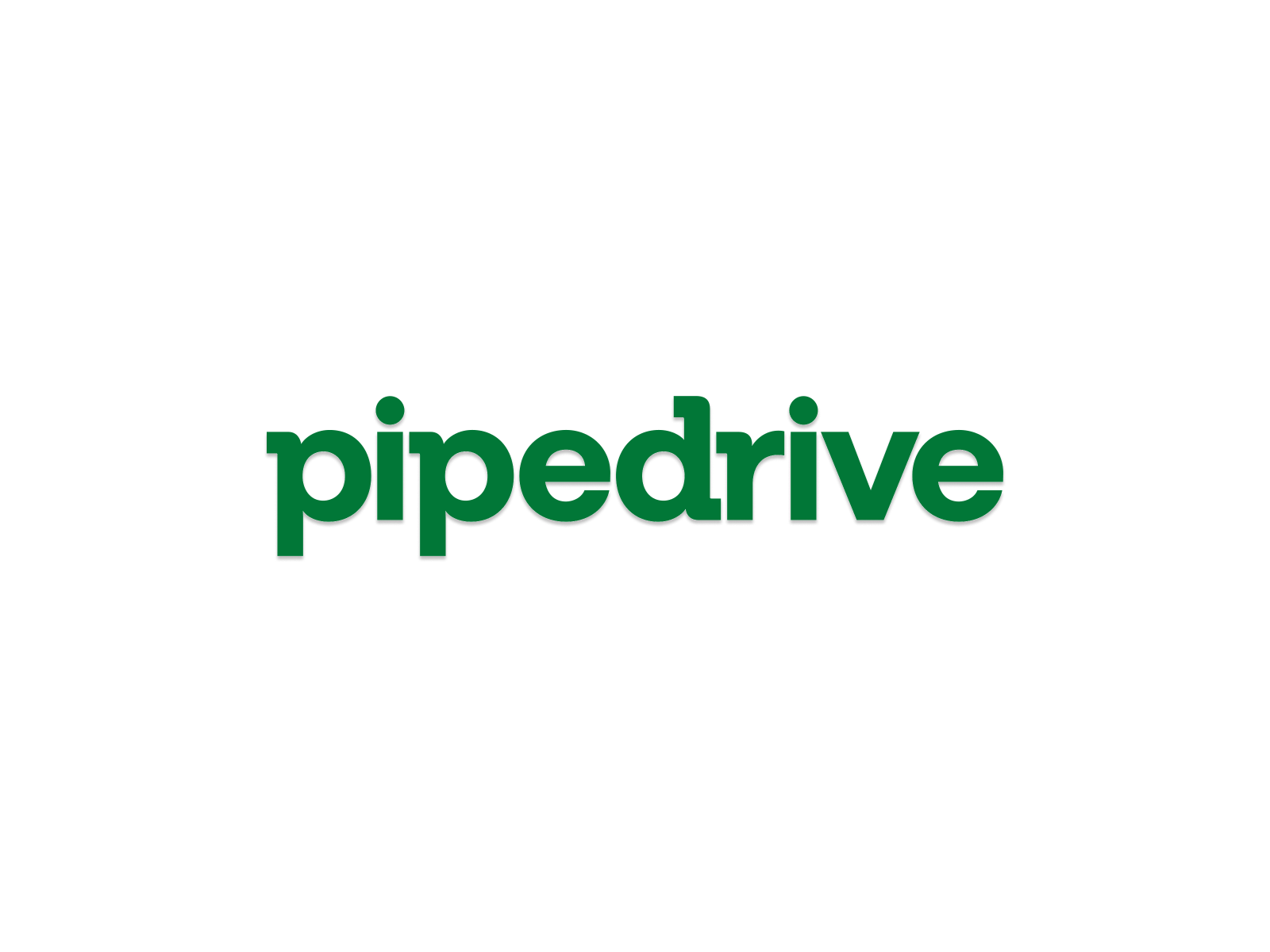
Pipedrive
Best Fit For: Sales teams that want simplicity and focus.
Pipedrive is a CRM built with salespeople in mind. It offers an intuitive, visual pipeline for deal tracking, straightforward automation, and reporting that keeps teams focused on closing deals.
Unlike HubSpot, it doesn’t try to be an all-in-one marketing and service platform, which makes it faster to adopt and easier to use for smaller teams.
Pros: Simple, affordable, quick to implement.
Cons: Limited marketing features compared to full-suite platforms.

Microsoft Dynamics 365
Best Fit For: Companies already invested in the Microsoft ecosystem.
Microsoft Dynamics 365 combines CRM and ERP capabilities, making it a natural fit for industries with operational complexity—such as finance, manufacturing, or healthcare. With deep integration into Office 365, Teams, and Power BI, it provides seamless collaboration and advanced analytics.
Pros: Strong integration with Microsoft tools, supports both CRM and ERP needs.
Cons: Can be complex to configure, higher cost than lighter-weight CRMs.
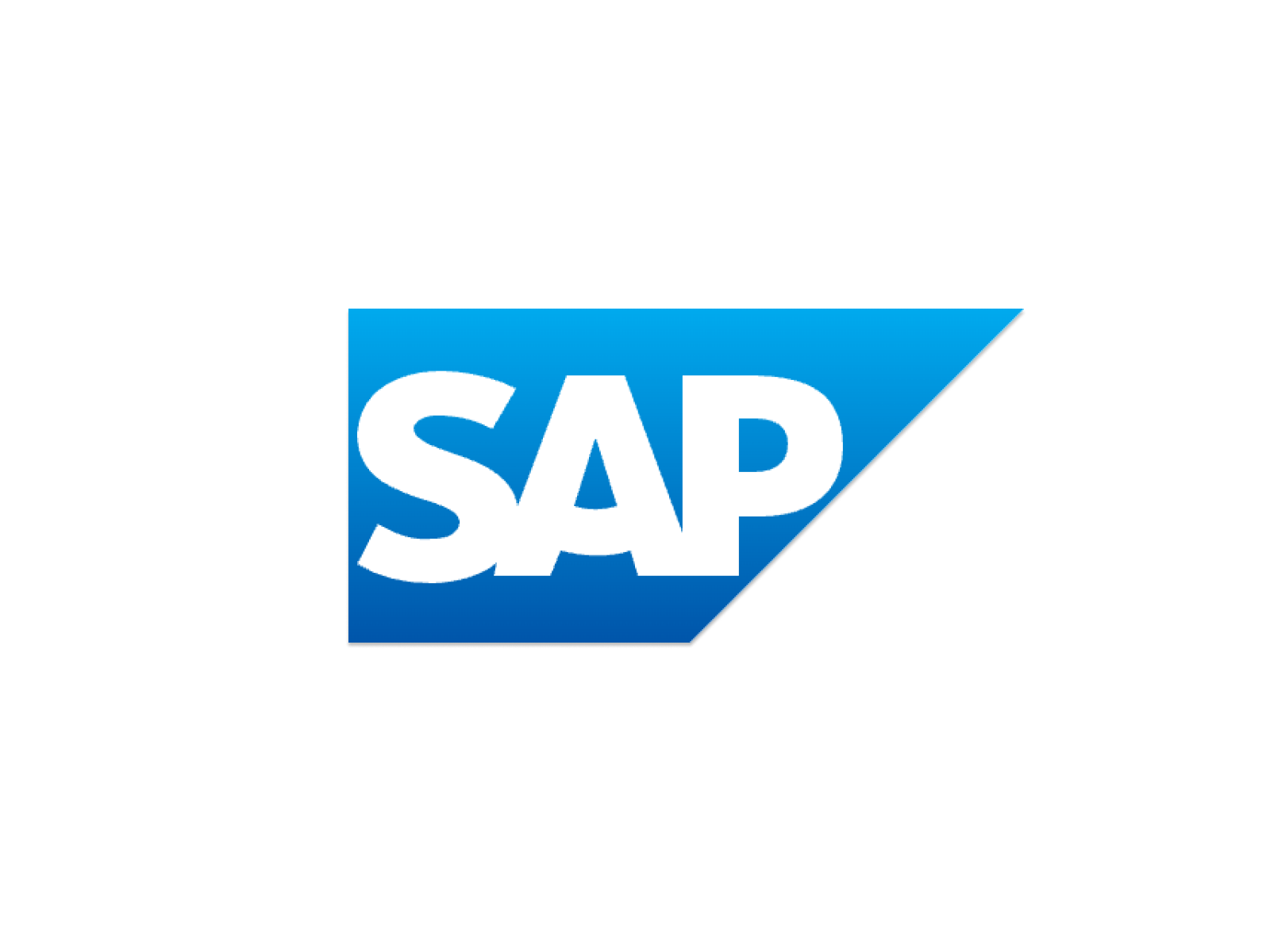
SAP Ecosystem
Best Fit For: Global enterprises with advanced operational needs.
The SAP suite, anchored by SAP CRM and SAP Customer Experience (CX), is a heavyweight solution built for large organisations. It shines when CRM functionality needs to be tightly integrated with ERP, supply chain, and finance systems. This makes it especially valuable for manufacturing, logistics, retail, and pharmaceutical industries.
Pros: Enterprise-grade integration, global scalability, strong compliance support.
Cons: Expensive, resource-intensive, steep learning curve.
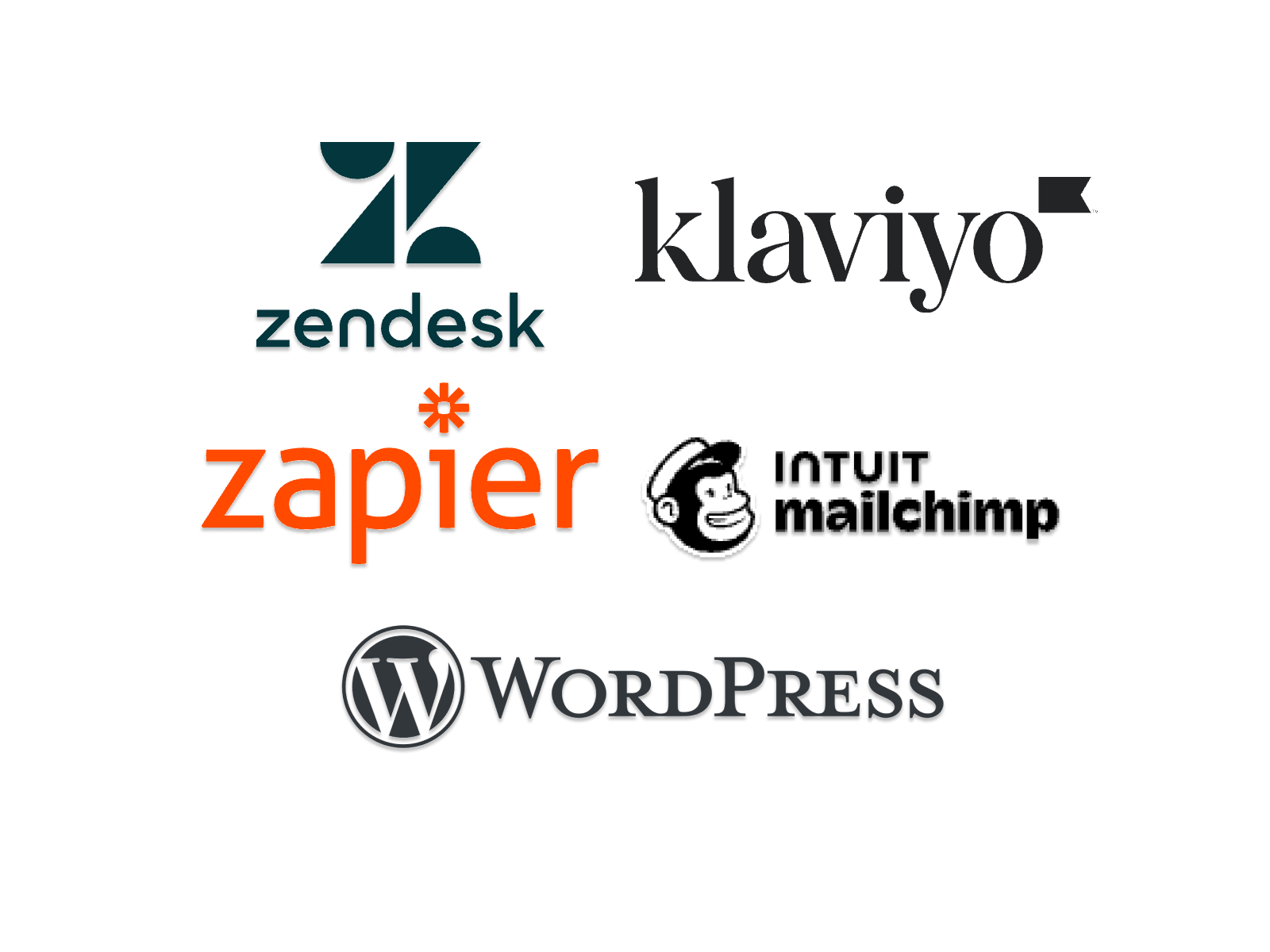
Best-of-Breed Tech Stack
Best Fit For: Businesses that value flexibility and specialisation.
Instead of relying on a single all-in-one system, many companies prefer to integrate multiple best-in-class tools that each excel in their category. For example:
-
Pipedrive CRM for sales pipeline management
-
Klaviyo for advanced marketing automation
- Mailchimp for a dedicated email marketing solution
-
WordPress for website management and content
-
Zendesk for customer support and helpdesk functions
This modular approach lets businesses choose exactly the tools they want while connecting them with integrations, APIs, or middleware like Zapier and Make.
Pros: Flexibility, best-in-class functionality, tailored to specific needs.
Cons: More complex setup, risk of data silos, requires ongoing integration management.
Thinking about moving your website to HubSpot? Use our migration calculator to see how much your transition could cost.
- How many pages your website has, excluding product pages, blogs and listings?
- If you're running any integrations
- If you've got an existing HubSpot Plan
- If you're looking for just a migration, or a rebuild too
Hubspot Migration Calculator
Note, this is an estimate based on standard effort involved in migrating a website to Hubspot. You may have a more or less complex migration need so use this as a helpful guide
Migration Cost Estimate
Book a Demo
HubSpot offers an affordable way to get started, but more advanced features can increase your costs. This means your entry point can be anything from $30 NZD/month through to hundreds or even thousands of dollars a month, depending on your requirements.
Bundles are ideal if you need a mix of tools. However, these bundle deals don’t apply once you move up to a Pro tier.
Starter tiers are the most cost-effective entry point for each product, giving you basic functionality. As your needs grow, you may quickly reach the limits of Starter.
Upgrading to Pro is a significant step. This is where you unlock advanced features, but you’ll also need to pay for onboarding with a HubSpot partner.
Enterprise tiers are designed for larger, more complex needs. If you think you need Enterprise, see the statement below for guidance.
To find the right pricing option, we recommend exploring HubSpot’s website, speaking with their team, or connecting with a Partner like Black Sheep.

Understanding Hubspots Pricing
HubSpot’s pricing page is straightforward, letting you easily compare plans for businesses, enterprises, individuals, and small teams. Most marketing managers find the individual and small team options meet their needs.
For a quicker comparison, use the “Create a bundle” tool. It helps you select the right combination of features without jumping between pages.
If you’re interested in pro-level features, remember these plans require partner onboarding. Reach out to a HubSpot partner like Black Sheep Creative for expert guidance and support.
Starter Tiers
Starts at $30 NZD/mo
Ranging from bundles that pack loads of value into a single seat-based subscription, through to individual starter tiers that give you base functionality alongside pro tiers. HubSpots' pricing can deliver even free entry points for businesses just starting out.
Example features include:
- Great for small businesses
- Built-in AI Assistant
- Lots of features
- Benefit unified data
- Allow some automations
- Social Media Integrations
- Case Studies
- Website Database
- Website Member Pages
- AB Testing
Pro Tiers
Vairable Pricing
If you need more advanced automation and features, our pro tiers offer flexible options. Single-seat products like Sales, Smart CRM, and Commerce Hub start at $80 NZD per seat. Marketing and Content Hub packages include multiple seats from the start, with Content Hub beginning at $740 NZD for three seats.
Example features include:
- Ideal for growing businesses
- Way more features
- Additional reporting capabilities
- Comprehensive Automations
- Social Media Integrations
- Website Case Studies
- Website Database
- Website Memberships
- AB Testing
Enterprise Tiers
Vairable Pricing
Enterprise tiers usually have the highest cost difference, though they are usually only needed for large, enterprise-level businesses that need deeper customisation and highly advanced analytics and reporting. Enterprise seats can start at as little as $250 NZD per seat. Similar to Professional Tiers, these jump considerably for Content and Marketing Hub Enterprise and offer more seats out of the box.
- Custom Objects
- Advanced Permissions
- Multi Site Functionality
- Content Approval Flows
- Quote Approval Workflows
- Multi Touch Revenue Attribution
- Customer Journey Analytics
And that's just scratching the surface...

Working with a HubSpot partner
If you're looking at anything from Starter through to Pro or Enterprise HubSpot tiers you don't need to act alone. Working with a HubSpot partner is a great way to get over the learning barrier really quickly and get started.
You may not need a partner for a long period of time. It's best to think carefully about which partner you use and where that partner is located. There are many partners globally, and sometimes finding a partner closer to home is going to be one of your best advantages for getting the most out of HubSpot.
It's also important to keep in mind that partners are incentivised to upsell you into higher tiers, so be really mindful about what you're being sold and the value that you're going to get from a different tier or a particular package before you sign on. Oftentimes, you will have to pay your pay annually to get the best value. And you could find that you're locked in to paying a lot of money for a long time for features that you may not use.
This guide has walked you through what HubSpot offers and how to decide if it’s right for your business. With so many tools and features, it’s natural to feel a little overwhelmed—but you don’t need to do everything at once.
Start small. Pick one hub. Content, sales or marketing, and build from there. These hubs can usually deliver the most immediate value and often fund further expansion into the ecosystem.
As you start seeing real results, you’ll know it’s time to bring more into HubSpot: your website, your service tools, and other operational systems. Step by step, you’ll unlock the full benefit of the platform.
You can find out more about our HubSpot services right here.